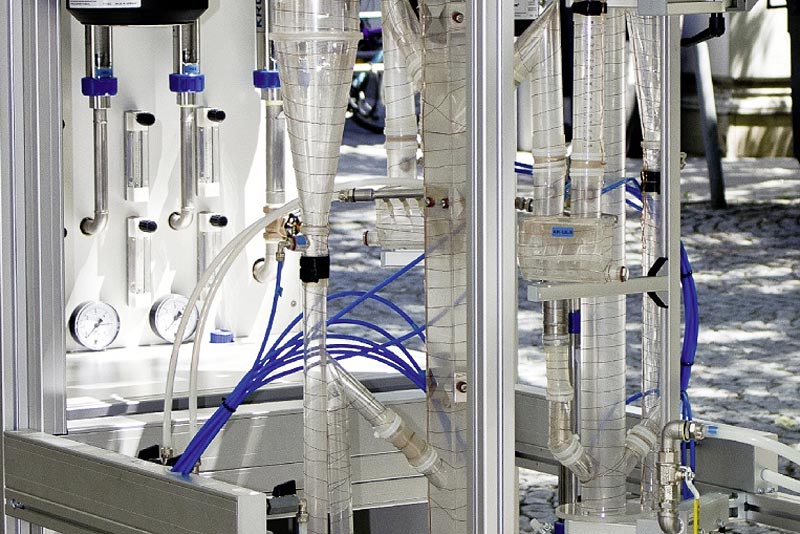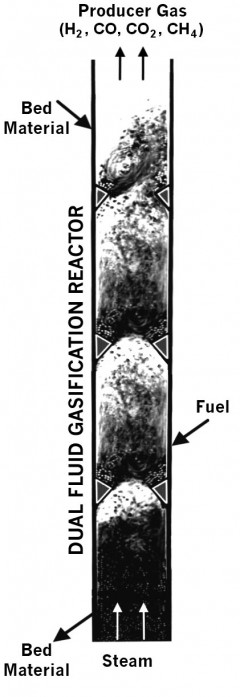The DUAL FLUID technology, first used in Güssing (Austria), is already being used on an industrial scale in several places today to convert homogenous, uncontaminated wood chips (Oberwart/9 MW and Villach/15 MW, both in Austria, Senden/Neu-Ulm/14 MW in Germany and Göteborg/32 MW in Sweden).
In order to be able to make use of low-grade, locally available raw materials a lot of research effort at the Vienna University of Technology is being put into developing this successful technology further towards fuel flexibility and increased efficiency. Within the framework of the G-volution I and II projects, scientists at the Institute for Chemical Engineering are designing and building a novel pilot plant which will convert industrial residual materials and agricultural waste into a high-grade natural gas substitute of high calorific value. Developing this new fluidized-bed concept will result in a system which guarantees, beside a broad range of fuels, improved overall efficiency and perfect preconditions for large-scale facility output.
The focus is particularly on low-cost fuels available in abundance, such as wood shavings, tree bark, waste/discarded wood, sewage sludge, loppings, black liquor, waste straw/reeds/plants, as well as other biogenic residual or waste materials. These fuels represent a particular challenge for the gas production concept. Amongst other things, great amounts of fine and coarse ash colect which have to be removed continually from the system.
The new design has in the meantime been patented as an innovation in the field of fluidized-bed technology. The trial results from a cold model serve as the basis for constructing the Technikum “hot unit”, which will produce the desired producer/synthetic gas under true working conditions at 850 °C. The project sequence is to be conducted in cooperation with TECON Engineering GmbH, a partner from industry.
The new test facility will contribute to making increasing use of biogenic residual materials in future. The aim is in particular to offer an alternative to companies which have to rely on fossil fuels due to technical constraints relating to production or processes. It is thereby primarily envisaged to appeal to companies producing iron, steel and petrochemical products.
The DUAL FLUID-Konzept consists of two fluidized beds which are integrated with a hydraulic connection beneath. Thereby one of the two fluidized beds delivers the energy necessary for the gasification process by burning some of the biomass.

The heat generated is fed into the gasification fluidized bed via the bed material. The gases from both reaction chambers do not mix. The DUAL FLUID gasification technology thus permits the production of nitrogen-free producer gas. In conventional designs with two fluidized beds the gasification reactor is implemented as a stationary bubbling bed and the combustion reactor as a circulating fluidized bed. But the bubbling fluidized bed design has the disadvantage that above the bed there is an empty space which contains only gas and no catalytically active bed material. The novel design of the gasification reactor replaces the empty space with geometrically defined counterflow zones for increased gas/solid contact. Increased interaction of bed material and flowing gas(es), and the systematic use of catalytically active solids improves the quality of the producer gas. The amount of steam used in gasification is also optimized to improve the efficiency of the system.

